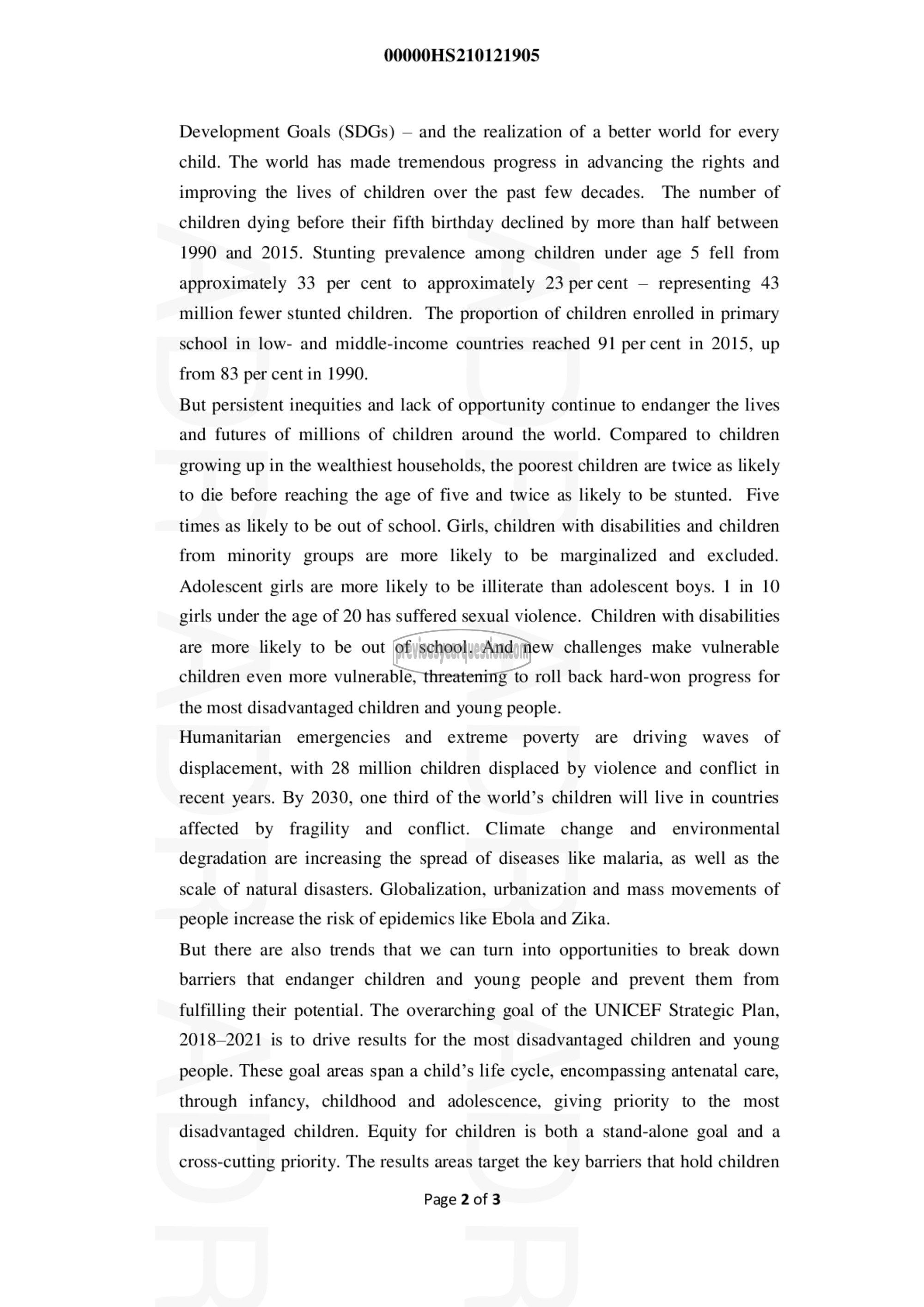APJ ABDUL KALAM TECHNOLOGICAL UNIVERSITY Previous Years Question Paper & Answer
Semester : SEMESTER 3
Subject : Life Skills
Year : 2020
Term : DECEMBER
Branch : MECHANICAL ENGINEERING
Scheme : 2015 Full Time
Course Code : HS 210
Page:2
00000HS210121905
Development Goals (SDGs) - and the realization of a better world for every
child. The world has made tremendous progress in advancing the rights and
improving the lives of children over the past few decades. The number of
children dying before their fifth birthday declined by more than half between
1990 and 2015. Stunting prevalence among children under age 5 fell from
approximately 33 per cent to approximately 23 percent — representing 43
million fewer stunted children. The proportion of children enrolled in primary
school in low- and middle-income countries reached 91 per cent in 2015, up
from 83 per cent in 1990.
But persistent inequities and lack of opportunity continue to endanger the lives
and futures of millions of children around the world. Compared to children
growing up in the wealthiest households, the poorest children are twice as likely
to die before reaching the age of five and twice as likely to be stunted. Five
times as likely to be out of school. Girls, children with disabilities and children
from minority groups are more likely to be marginalized and excluded.
Adolescent girls are more likely to be illiterate than adolescent boys. | in 10
girls under the age of 20 has suffered sexual violence. Children with disabilities
are more likely to be out of school. And new challenges make vulnerable
children even more vulnerable, threatening to roll back hard-won progress for
the most disadvantaged children and young people.
Humanitarian emergencies and extreme poverty are driving waves of
displacement, with 28 million children displaced by violence and conflict in
recent years. By 2030, one third of the world’s children will live in countries
affected by fragility and conflict. Climate change and _ environmental
degradation are increasing the spread of diseases like malaria, as well as the
scale of natural disasters. Globalization, urbanization and mass movements of
people increase the risk of epidemics like Ebola and Zika.
But there are also trends that we can turn into opportunities to break down
barriers that endanger children and young people and prevent them from
fulfilling their potential. The overarching goal of the UNICEF Strategic Plan,
2018-2021 is to drive results for the most disadvantaged children and young
people. These goal areas span a child’s life cycle, encompassing antenatal care,
through infancy, childhood and adolescence, giving priority to the most
disadvantaged children. Equity for children is both a stand-alone goal and a
cross-cutting priority. The results areas target the key barriers that hold children
Page 2 of 3
